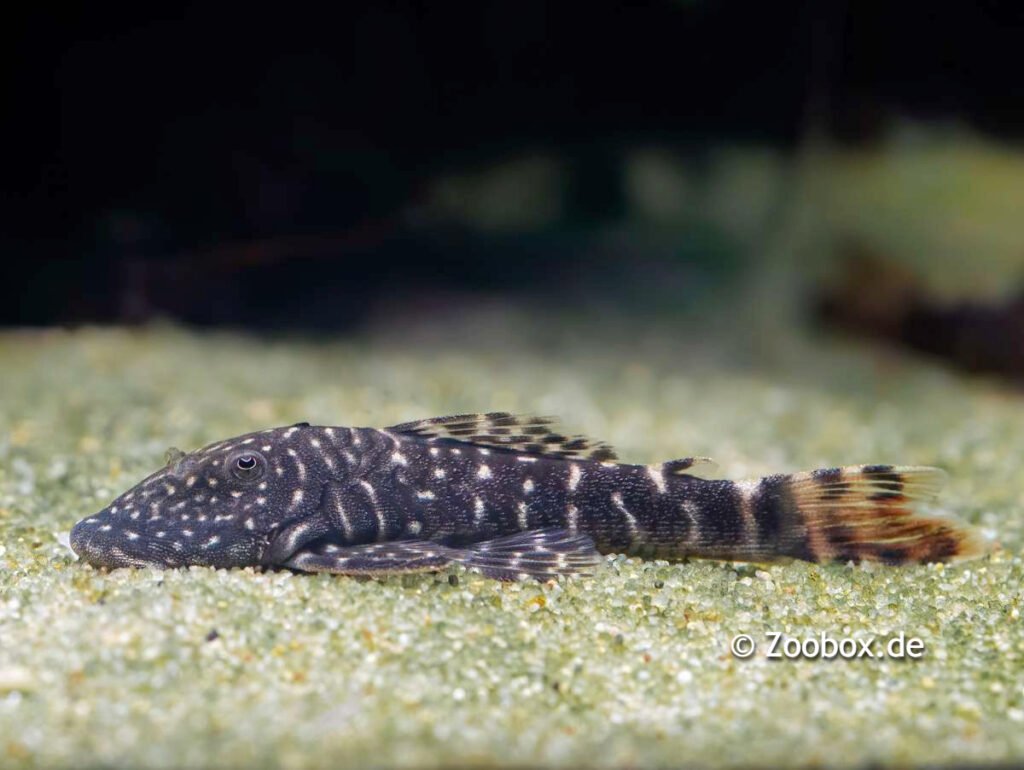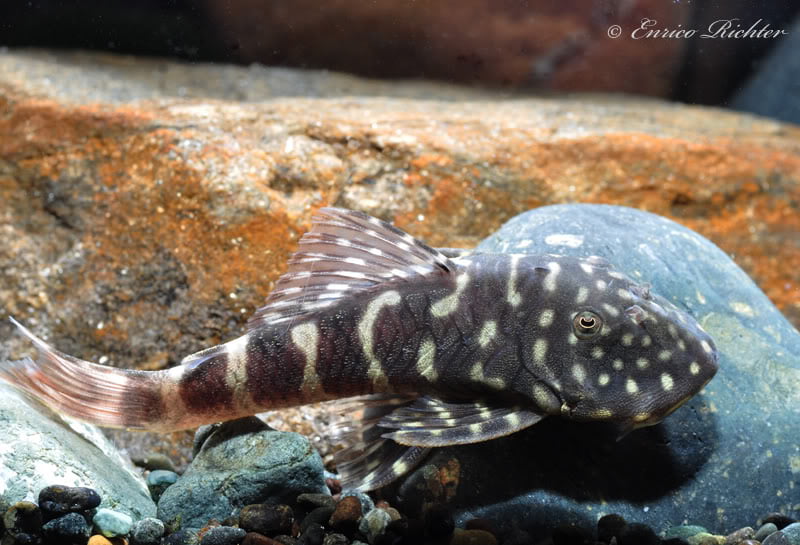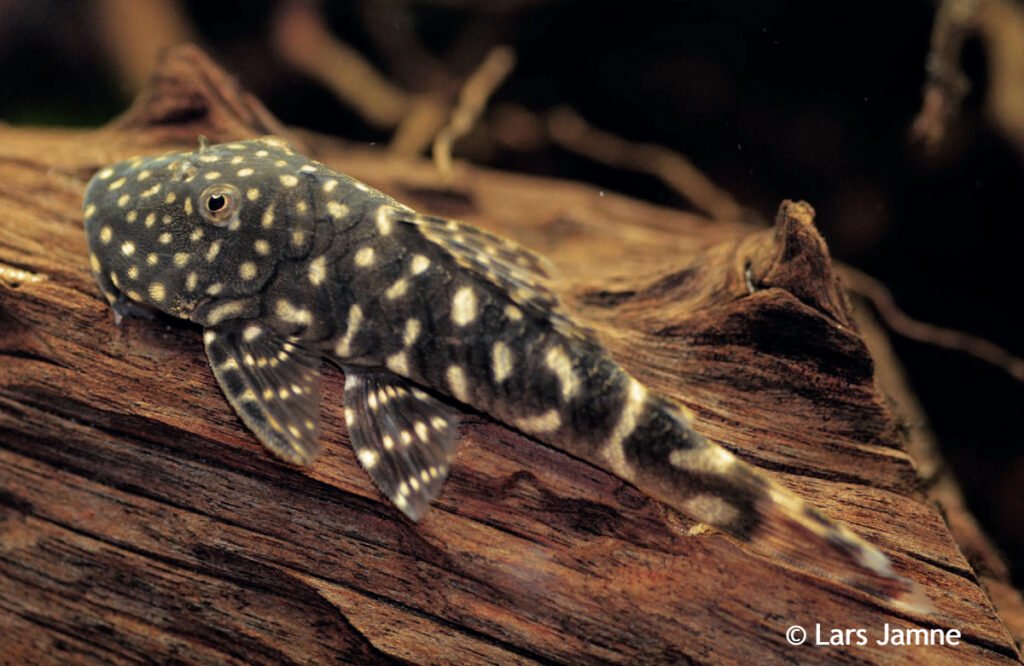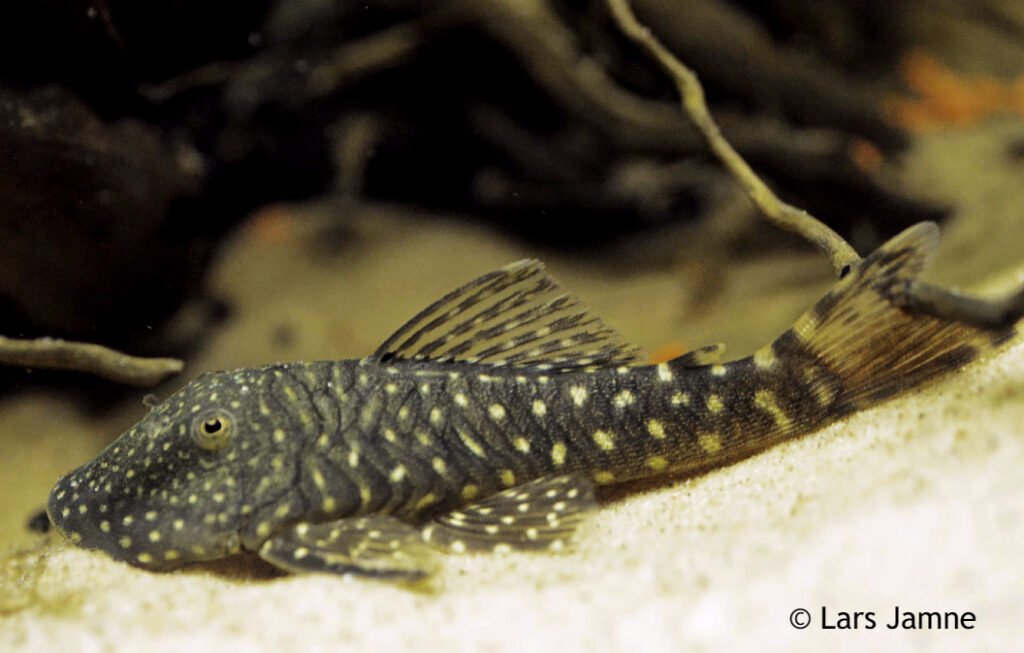







The genus Chaetostoma is not known for having very spectacular members as far as colours are concerned. An exception is the wonderful C.sacramento, which entered the trade in 2011. Due to its preference for slightly cooler water and its reluctance to breed in captivity so far, it’s yet to gain great popularity within the hobby but it would surely have more fans if it was more well known! Three different L-numbers, L455 / L456 / L457, were given simultaneously by Ingo Seidel.
Facts:
Name: Chaetostoma sacramento (Meza-Vargas, Ramirez & Lujan, 2024)
Trade names: Chaetostoma sp.“Tiger” (L455), C.sp.“Pisqui” (L456), C.sp.“Tingo Red” (L457)
Origin: Rio Negro, upper Rio Pisqui (L455), Rio Pisqui (L456), Rio Chiu, upper Rio San Alejandro (L457), Peru.
Maximum TL: 14 cm / 5”
L455, L456 and L457 are believed to be the same species by some, but Ingo Seidel see them as different species due to their different base colouration (L456 is said to be more “chocolate brown”) and natural distribution. Difference in appearance is thought to be partially due to gender difference and dominance, with dominant/breeding males believed to be more colourful. With the scientific description published in 2024, we learned that all these three L-numbers belong to the same species.
C.sacramento is from the Pampa de Sacramento region, a valley between Rio Huallaga and Rio Ucayali, Peru. Reports suggest it takes about 20 hours by boat to travel from the mouth of Rio Pisqui in this valley, to where it meets the Andes. This information could suggest that this species originates from water that isn’t particularly warm (20-25 C), like with several other Peruvian Chaetostoma biotopes. A captive environment should be set up with this in mind; clean, well filtered oxygen rich water is essential. The species is mostly herbivore, but some insect larvae and similar foods can be offered as supplement, along with good quality dry food. Breeding is yet to be reported.
More info:
